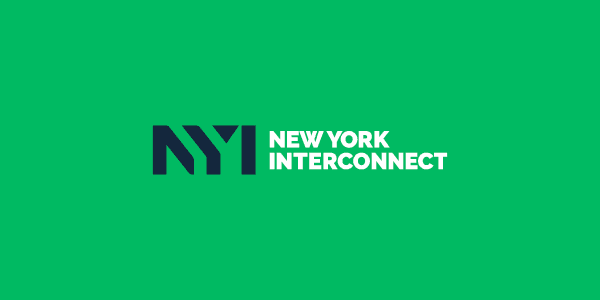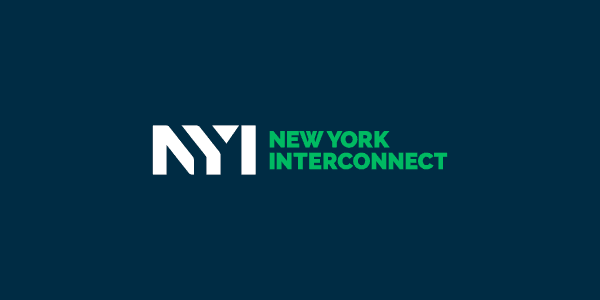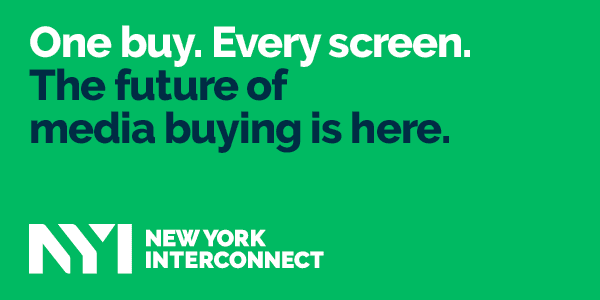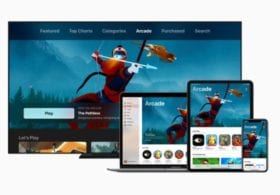|
A CYNOPSIS MESSAGE FROM NEW YORK INTERCONNECT
|
|
|
| WEDNESDAY OCTOBER 7, 2020 |
| Cynopsis Live From Advertising Week – 10/7/20
Cathy Applefeld Olson
Advice on personalizing throughout the funnel; why Twitter moms are so brand-friendly; and an exclusive Q&A with ESPN’s marketing chief. It’s Wednesday, October 7, 2020 and this is your daily Cynopsis dispatch from Advertising Week 2020.
BRANDS + PERSONALIZATION
Where’s the line between personalization and voyeurism today? “We’re so far past the point of being creeped out by sites knowing something about us. Now, if they don’t know something about us it’s more frustrating,” said Nate Checketts, CEO of performance apparel brand Rhone. It’s a balance to determine the best way to customize for each customer, said Lex Josephs, VP of sales & partnerships at Walmart. “We’re looking at, what are the services that are right for which of our customers as it relates to…how one orders items, and how one is looking to be targeted in store, online and in app. And then, How does the advertiser want to connect, how does the brand want to connect?” Sharon Harris, CMO at Jellyfish, sounded a reminder: “When people think about personalization, they think the customer goes down one distinct funnel. But we all enter and exit at different times and for different reasons. Meet the customers where they are in that moment,” she said. “That’s where you’re able to harness and optimize personalization. Don’t assume they’ll go from A to B to C. It’s much more of a zig-zag than a straight line.”
BRANDS + CULTURE
“I did the soundtrack to Men in Black, and it sold 10 million albums, but the glasses Will Smith wore, Ray-Bans, sold 14 million and we didn’t get any credit for making that happen. I always wanted to close that gap,” said Steve Stoute, CEO of music distribution company UnitedMasters + Translation. Now, Stoute’s company is partnering with Nielsen to create products to measure both the creators of cultural trends and trend influencers.
Nielsen also is diving deep into diversity: “There is systemic racism in the media business and the advertising business,” said David Kenny, CEO & chief diversity officer at Nielsen. “The only way I know how to deal with systemic racism is to create systemic anti-racism. There is nothing more systemic than the Nielsen ratings. We’ve got to make sure our measures are inclusive.” Kenny said the company spends big bucks “to not just rely on big data that does have bias.” It also is watching the DNA of content in concert with its Gracenote business. “We’re working to create inclusive metrics, so we grade every television program by how inclusive its cast and crew are.”
TWITTER + MOMS
Moms and Twitter, who knew? Kunur Patel, industry manager, CPG, at Twitter unveiled some new stats about the demo and the platform, including the news that they’re very brand-receptive: 64 percent of US moms follow brands on Twitter and 83 percent often look for further product information after seeing an ad on Twitter. Also…
* 50 percent of moms are on the platform daily
* 78 percent of Twitter moms feel their voice as a mom will be heard on Twitter
* 78 percent of Twitter moms report using the platform as a vital source of news |
 |
|
A CYNOPSIS MESSAGE FROM NEW YORK INTERCONNECT

GOOD SPORTS: EXCLUSIVE Q&A WITH ESPN’s SETH ADER
From accelerating the release of Michael Jordan doc The Last Dance to pulling off the virtual draft with the NFL, ESPN stayed on air throughout the sports shutdown. Brand marketing chief Seth Ader talks Cynopsis through its pandemic playbook.
What was your first pivot when sports shut down?
It was really important to not try to pull the wool over anyone’s eyes, and to acknowledge that without live sports we would be sad also. For a lot of people sports equals fun, something to look forward to and community. In the absence of that we had to quickly think about what can we do to provide people with those same things in their lives.
The Last Dance Comes to mind…
The Last Dance is the most obvious example of that. We thought we were going to have March, April and May to lead up to June 2 and create this groundswell of support, but then we had one month. That threw everything into a bit of warp speed for us. But we heard countless stories from people about how it became family viewing on Sunday nights and unified the country at a really dark time. The social media impact was enormous, maybe more than anything we’ve seen.
You’ve had other big pivots as well.
Another one we did was the SportsCenter ad campaign. We’ve been at that campaign since 1995. It’s the longest-running campaign on the air with over 400 commercials. So we have this vast library of spots that one at a time are really entertaining but when you put them all together they almost become content themselves. We worked with the programming team to create three shows, basically compilations of commercials. We saw some of our best days ever in terms of brand health on the day we ran the show.
And ESPN launched new campaigns during the sports shutdown.
We had two spots under our belt for our campaign called “There’s No Place Like Sports” before March, and then for the next spot we decided to end with the simple line, “We miss it too.” The fourth spot was called “The Wait.” The insight there was that so much of sports is spent waiting—for the pitch, for the tip off… there was this beautiful parallel waiting for sports to return. We ran a fifth one when sports came back in July—“And we’re Back,” really a celebration. We have a sixth one in the works, it’s about just celebrating sports and celebrating fandom even during tough times… fandom always finds a way to come through.
How did you strike the balance between being empathetic, hopeful and realistic?
We studied a lot of brands’ PSAs that all started to feel the same, starting with the soft piano music… We were very sensitive to the fact that we’re not necessarily the brand people want to see that from. People turn to ESPN for an escape, and for some sense of excitement and joy. One of things we learned was we not only have a responsibility to do the right thing by the company, but we have a responsibility to affect people’s moods.
What learnings will you take with you going forward?
You’ll definitely see more This Is SportsCenter shows from us. You’ll probably see more compilation shows in general because they’re great filler programming. |
 |
|
A CYNOPSIS MESSAGE FROM NEW YORK INTERCONNECT

COOKS IN THE MEASUREMENT KITCHEN
Nielsen used to be the only game in town. Today, there are numerous companies and industry orgs with their hat in the ring of cross-platform measurement. Where do we go from here? “Industry bodies are critical to this conversation. We are at a point in the industry where those industry voices need to come together to align on what that ultimate cross-platform measurement looks like,” said Kavita Vazirani, EVP, insights & measurement at NBCUniversal. “We have to work together, the buy side and the sell side, vs. having multiple initiatives that focus on just streaming or just digital. Consumers don’t do that.” Ben Jankowski, SVP, of global media at MasterCard, said he was willing to throw his sector under the bus. “One of the groups that has to be more active and focused is the marketers. There are very specific work streams… Brand safety and cross-media measurement are two big ones. We are trying to be more focused on specific things and be action-oriented and actually deliver.”
NEW YORK STORIES
“New York is far from dead,” proclaimed Michael Minardi, VP of sales at New York Interconnect. “There has been some migration of people moving out from Manhattan since 2013, but a lot of people are staying in the DMA, which is great.” He said although auto and destination travel are still light, NYI is seeing a bounce back in advertising from most client verticals: “Healthcare and pharmaceuticals came in strong during the pandemic.” NYI created its Audience One solution to serve a market where consumers are viewing more advertising in an interactive, connected ecosystem. “We built the Audience One platform because we needed to better serve marketers by creating a unified solution and an integrated approach,” said Sona Pehlivanian, VP of addressable campaign management & operations at NYI. “Through partnerships with MVPDs we’ve streamlined the way we’re able to take an audience and data and look at which networks and dayparts are going to best fit what they’re trying to reach. And because it’s the New York market, it can apply to the whole marketplace.”
BRANDS + CREATIVITY
Sheltering in place called for a whole new kind of creativity for brands of all stripes. At JPMorgan Chase, executing on a new Sapphire campaign meant reaching out to extended “family.” “We reached out to a photographer we had worked with and asked him to shoot his family at his house and in his car to crate the creative execution,” said Leanne Fremar, chief brand officer at JPMorgan Chase. “Where we would’ve spent months planning and sending people on adventures to create the campaign, we were able to direct a film shoot in somebody’s house… it was very honest and beautiful.” Same with Facebook. “When we were creating a film for Mother’s Day, we used filmmakers and photographers who are parents themselves or about to give birth,” said Kate Rouch, VP of marketing for Facebook Company Brand. “I think when someone is filming their own partner and loved ones, that shines through in the ultimate result.” |
 |
|
A CYNOPSIS MESSAGE FROM NEW YORK INTERCONNECT
 SCENE + HEARD
“I never thought the tools I developed when I was homeless would lead to a second career for me.” – singer/songwriter Jewel
“I grew up in the Tang Generation, where you didn’t need real oranges and you can have TV dinners, but my mom was having none of it.” – Jennifer Garner, co-founder/chief brand officer, Once Upon a Farm
On cancel culture: “You have to just live your life. There’s no winning, so knowing there’s no winning, I feel like being in the position I am, I owe it to the world to share good messaging. I grew up in a place in Mississippi where everyone was so small-minded.” – music artist Lance Bass
“The root of everything comes down to honesty. Tread carefully, but be honest with yourself.” – Chris Diamantopoulos (Silicon Valley)
Even big execs get a tuck-in. Travis Freeman, global head of media at Uber, started with the company at the end of January and within weeks was quarantining remotely: “I’m now in South Carolina sleeping in my childhood bedroom. It’s humbling.”
AWNY is virtual this year with 750 speakers, 400 sessions and 100-plus hours of content. Cynopsis will be forecasting, executing and measuring throughout the week. If you have news or insights to share, hit me up at [email protected] or on Twitter @Cathy_A_Olson.
Cheers,
Cathy Applefeld Olson
|
|




